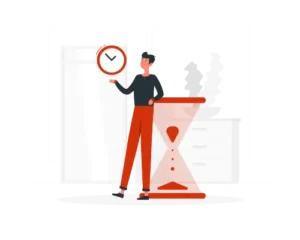Failure of traditional models of fraud detection
A majority of banks and financial institutions use rules-based systems with manual evaluation for identifying fraud. These methods worked well in the past but with fraudsters and cyber criminals becoming more sophisticated, the older methods for identifying and mitigating risks are simply not fast enough.
Over the years, fraud patterns have transformed and evolved faster than the rules-based processes. This has led to multiple issues. For instance, false positives or undetected incidents as a result of the high volume of banking data. This is where robotics process automation comes to the rescue.
The Banking and Financial Services sector is heavily reliant on standard processes and systems. The BFSI sector is also one that is highly susceptible to fraud and fraudulent behavior. Especially in the wake of COVID-19 and new digital initiatives, there has been a rise in incidents of fraud and the threat is only looking large. As per a Deloitte India survey, the key reasons leading to the rising cases of fraud include the large-scale remote work models, increasing customers leveraging non-branch banking channels, and the ineffective use of forensic analytics tools to find and mitigate potential frauds or threats. The solution lies with leveraging RPA in Fraud Detection that can reduce the overheads associated with traditional fraud prevention processes and get faster, more accurate results.
Implementation of RPA in fraud detection
RPA solutions are ideal for use cases that need to analyse vast reams of data quickly and then apply rules-based actions to it. RPA is then ideal for the automated, repetitive and rules-based financial macros of fraud detection.
Not only is this solution cheaper and faster, it is more efficient as it gets rid of the manual errors and enables the workforce to focus on less tedious and more creative work.
Here’s how implementing RPA can help in fraud identification and mitigation:
1. Reassessing current processes
2. Elimination of human errors
3. Improved trade monitoring
4. Automated threat detection
Monitoring thousands of web pages or reams of application data would be a huge task for any fraud detection team. However, this task would be much simpler, faster, and easier for a bot.
Two of the common use cases where RPA solutions can be leveraged to implement automated threat detection include:
● Copyright infringement
● Pricing information
Why should RPA be used for fraud mitigation?
Benefits of using RPA for fraud detection
Final thoughts
RPATech’s customized financial bot solutions don’t just help your organisation to save on costs or work faster, it helps you to work smarter. By adopting RPA, you join the league of several other industries and create a competitive advantage. If you want to understand how RPA adoption creates a win-win situation for both your employees and customers, get in touch with us for a consultation.




